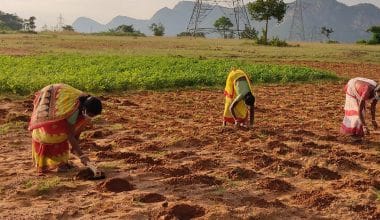The Individual Development Accounts (IDA) Program assists refugees and other ORR-eligible people in saving money for more possessions that would boost their economic stability. This is one of the major grants that have helped individuals all over the globe. For a successful IDA grant application, you will need to understand the grant, how to apply, and the existing program surrounding the grant you wish to apply for. Join us as we set the ball rolling
IDA Grant
An Individual Development Account, or IDA, is a unique type of savings accounts for those with low earnings. Your savings will be matched with donations if you place them in an IDA. This implies that for every dollar you save in an IDA, you could receive an additional dollar or more. IDA savings and match funds are typically useful for home purchases, paying for education or job training, or starting small businesses.
When you create an IDA, you will get knowledge about banking, budgeting, saving, and more, in addition to earning match cash. Account holders who open IDAs are typically obliged to take financial education programs. Additionally, account holders may get individual counseling and other training.
Read Also: The Top 15 Easy Single Mom Small Business Grants in 2023
How Do IDAs Function?
IDAs are typically provided through initiatives that entail collaborations between regional financial institutions and nonprofit organizations. The IDA program sponsor is another name for the neighborhood charity. The sponsor of the IDA program recruits participants for the IDA program conducts financial education seminars, and may also offer participants individualized counseling and training. Each participant will create an account with the partner bank or credit union after enrolling in an IDA program. In the same way that they handle transactions for other kinds of savings accounts, the bank or credit union manages all transactions to and from the IDA. Participants in IDAs get a report each month detailing how much money (from personal savings plus matching funds plus interest) has accumulated in their accounts.
From start to finish, an IDA program may last as little as one year or as much as five years. As soon as they reach their savings target, IDA members are permitted to withdraw money, but they must first obtain permission from the program’s sponsor. Some IDA members decide to save for one major purchase, like a house, while others do so for a series of smaller, linked objectives, such as school supplies and tuition.
IDA Grant Program.
A matching award of up to $4 is given to qualifying participants in an Individual Development Account (IDA) program, which is a savings incentive program, for every $1 they save. Participants can use their savings and the matched grant money to establish a business, pay for college, or buy their first house. IDA schemes have minimum savings requirements, a cap on the amount of matching funds a participant can receive, and basic money management training.
What Products Can I Buy Using my IDA Savings?
The majority of IDA systems permit account holders to use their savings to finance small businesses, education expenses, or the purchase of a property. However, some programs only permit one or two of these uses, while others might permit additional uses like housing renovations, computers, or car purchases. Make sure you are aware of all the applications that each IDA program supports.
How Long Can I Keep Money in my IDA?
While each program has a different term or savings period, the majority of them last between one and three years, the savings period specifies how long it will take to match your funds.
What is the Match Rate For the Program?
Each dollar you save because of IDA programs is matched with money from supporters. Many programs offer a 1:1 match rate, which implies that your savings will be matched 1:1 for every dollar you put in your IDA. However, match rates can vary depending on the program. The matching funds will be reported on monthly account statements so you may see how much money is accumulating in your IDA, but they cannot be removed without the permission of the IDA program sponsor.
The duration of the program and the quantity of match money raised by the sponsoring organization are used to calculate the program match rate. Programs with a shorter savings period typically have greater match rates in general (so that account holders will be able to save enough to purchase the asset they want). Make sure to think about if the saved time and match rate will help you save enough money to buy the asset you want.
Has the Program Sponsor Raised the Required Matching Funds?
You have a right to know whether the promised match funds have already been raised and deposited in the bank before signing up for an IDA program. Before enrolling participants, an IDA program sponsor may occasionally only raise a portion of the required matching money. Later in the year, they want to gather additional monies. Although it is dangerous, enrolling people with only partial support is permissible. You should have confidence in the ability of your IDA program sponsor to secure all required matching funds.
Will I Have to Put Aside a Specific Sum of Money Each Month?
In order to continue participating in the IDA program, some programs demand that account holders deposit a minimum amount every month or every few months. Make sure you have the money saved up to make the required minimum deposit before joining.
Is There a Maximum Amount I Can Put in My IDA?
Some programs will only match funds up to a specific financial amount (like $500) annually or throughout the program’s duration. In most circumstances, you are free to make any number of deposits into your account, but deposits that exceed a particular threshold will not be matched.
Will I Have to Go to Financial Literacy Classes?
All IDA programs include financial education as an essential component. To learn about setting up and managing household budgets, using credit wisely, the fundamentals of saving and investing, preparing for retirement, and much more, you’ll probably need to take a particular number of seminars.
Some IDA programs also offer training to help account holders make wise purchases in addition to financial education. Examples of this education include financial assistance counseling, small company development classes, or training or counseling for homebuyers. Even while this additional training is typically optional, it can give you valuable knowledge that will enable you to spend your IDA savings wisely.
Will I Have to do Anything Other Besides Going to Class and Depositing Money Into my IDA on a Regular Basis?
Before signing up for an IDA program, make sure you are familiar with all the requirements. For instance, will you be required to participate in religious services or other religious activities if the program is hosted by a faith-based organization?
Does The IDA Program Sponsor Offer Any Additional Services That I Might Find Useful?
A variety of services are offered to low-income families by several IDA program sponsors. As an illustration, certain organizations help families file their income taxes, get legal representation, apply for welfare assistance, or find affordable housing. Make sure to inquire about any other services offered by each IDA program sponsor that may be beneficial to you.
Does the IDA Grant Program Sponsor Collaborate With Other Local Institutions?
In order to offer accountholders services, IDA program sponsors frequently work in collaboration with other businesses and organizations. Since the IDA program, accountholders typically benefit because they get to meet a variety of local organizations.
Ida Grant Application
The IDA grant program application teaches refugees how to manage their finances, what assets are, and how the American financial system operates. Refugees can save an application under the IDA grant program for one of four assets:
- Car
- Home Acquisition
- To establish or maintain a business.
- Training or education after high school
Participating in the IDA grant Program
Refugees and other populations eligible for ORR who have been in the country for less than five years are served by the program. Refugees must have been in the nation for three months or fewer at the time of application and enrollment in the IDA grant if they intend to save for a car for commuting to school or a job. Participants who wish to sign up for the IDA grant application program must:
- Have a job that pays well.
- Earnings below the federal poverty limit, which is 200 percent
- Not owning anything worth more than $10,000, excluding one automobile and one house.
Participants in the Individual Development Accounts program receive the following:
- Training in financial literacy (like banking, savings, credit history, and writing checks).
- Training relevant to assets (like first-time homebuyer training, business planning, and first-time vehicle purchasing).
- A $1 match for every $1 the client has saved. Up to $2,000 for individuals and $4,000 for households may be matched.
Becoming a Grantee
A competitive grant program, the Individual Development Accounts program, has a certain amount of funding. The current funding cycle for IDA grantees is three years. When the IDA Funding Opportunities Announcement is available on Grants.gov, organizations that intend to run an IDA grant program must submit an application. Go to the disclaimer page. Organizations receiving funding to run an IDA program must offer:
- Financial literacy and asset-specific training requirements
- Services that aid in the production of money to match the savings of program participants
All grantees must have a partnership with a bank or credit union in order to be eligible for grant money because IDA grantees are required to keep track of the savings of program participants.
The following people are eligible for the Individual Development Accounts program:
- State authorities
- County authorities
- Township or city government
- Special district authorities
- Districts of independent schools
- Higher education institutes that are run by the state and the public
- The tribal governments of Native Americans (federally recognized)
- Tribal associations of Native Americans (other than Federally recognized tribal governments)
- The housing authority in public housing or in Indian housing
Applying for an IDA
Find an IDA program in your area if you’re interested in creating an IDA. The Prosperity Now Resource Center and the Assets for Independence Resource Center both have excellent directories of IDA programs.
There may be waiting lists for some programs. Even so, while you wait for a spot to open up, you might be able to start the process by enrolling in financial literacy classes.
Program Qualifications
The eligibility conditions range from program to program and are unique to each IDA program. The majority often have the following specifications:
- Your yearly income must be no more than 200 percent (or $27,180 for an individual and $36,6 20 for a couple) of the federal poverty level. However, if your income is between 65 and 85 percent of the median income in your area, you can qualify in specific circumstances.
- You must have had a job that paid a salary. Although, a few IDAs that are not supported by the federal government may have somewhat different standards for earned income and let you receive money from additional sources.
- Attend the free financial literacy course that is required. These courses typically address subjects including credit management, investing, building a savings plan, debt reduction, and money management.
Additionally, some programs have the following qualifications:
- Asset ceiling
- According to your credit history
- Based on whether you are a citizen or a resident with a valid ID
How to Get an Ida Grant.
The majority of IDAs are provided through initiatives that entail collaborations between financial institutions and regional nonprofits, commonly known as IDA program sponsors. The following requirements are listed by the Corporation for Enterprise Development and must be met by applicants for the IDA program:
1. Income: The majority of IDA grant programs outline an upper limit on household income for IDA eligibility. The maximum income levels that are eligible for the program might range from 200 percent of the federal poverty level to 80% of the local median income.
2. Earnings: Another crucial factor to consider is where the savings came from. Many IDA grant schemes demand that all or a portion of the savings amassed over the program originate from “earned income.” The traditional definition of this is a paycheck, but it also includes poverty, disability, social security, or unemployment benefits. Money received as a gift is an illustration of an income source that is not acceptable.
3. Net Worth: Some IDA programs also evaluate household assets such as a car, property, savings, etc. When calculating IDA eligibility, in addition to looking at the maximum household income.
4. Credit History: When establishing eligibility, some obstacles to saving are also taken into consideration. Debt from loans and credit cards is one of them. Therefore, having too much debt or poor credit history can make it difficult to get an IDA.
Who Is Eligible for Ida?
The following people are eligible for the Individual Development Accounts program:
- State authorities
- County authorities
- township or city government
- special district authorities
- districts of independent schools
- Higher education institutes that are run by the state and the public
How Many Countries Are Eligible for Ida Grant?
The sum total number of countries eligible for IDA grants is only 74.
What Is the Purpose of the Ida?
The majority of IDA systems permit account holders to use their savings to finance small businesses, education expenses, or the purchase of a property.
What Is an Incentive for a Person to Contribute to a Ida?
Incentives for Individual Retirement Account (IRA) Contributions (PF 4, Sec. 3) – The interest rate is the highest one offered by any financial institution.
Will Opening an Ida Reduce Your Ssi Benefits?
If you enroll in a federally supported IDA program, the money you put away in your account will not affect your eligibility for governmental assistance programs like SSI and Medi-Cal.
What Are the Ways of Ida Lending?
IDA lends money on concessional terms. Because of this, IDA credits have a 0% or low-interest rate, and the payback duration is up to 40 years (with a grace period of 5–10 years). IDA also gives grants to nations in danger of debt trouble.
How Does Ida Pro Work?
In IDA Pro, the supported file formats will be displayed automatically. The analyzed file will be shown, and we will be given the option to load it using any of the available file loaders. My installation of IDA Pro has the following files in its loaders directory: dbg, llx, and elf.






